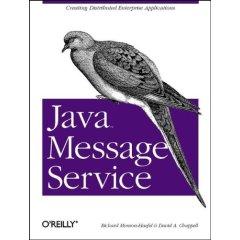| 2020ok Directory of FREE Online Books and FREE eBooks |
Free eBooks > Computers & Internet > Web Development > Internet Applications > Email > Java Message Service (jms) Tutorial
Java Message Service (jms) Tutorialby Richard Monson-Haefel and David Chappell  Download Book (Respecting the intellectual property of others is utmost important to us, we make every effort to make sure we only link to legitimate sites, such as those sites owned by authors and publishers. If you have any questions about these links, please contact us.) link 1 About Book Amazon.com The Java Message Service (JMS) provides a way for the components of a distributed application to talk asynchronously, or for welding together legacy enterprise systems. Think of it as application-to-application e-mail. Unlike COM, JMS uses one or more JMS servers to handle the messages on a store-and-forward basis, so that the loss of one or more components doesn't bring the whole distributed application to a halt. JMS consists of a set of messaging APIs that enable two types of messaging, publish-and-subscribe (one-to-many) and point-to-point (one-to-one). The highly lucid explanation of the ways in which these work makes the technical content a lot more approachable. In practice, however, Java Message Service is still a book for Java programmers who have some business programming experience. You need the background. After a simple JMS demonstration in which you create a chat application using both messaging types, the authors dissect JMS message structures, explore both types in detail, and then move on to real-world considerations. These include reliability, security, deployment, and a rundown of various JMS server providers. The appendices list and describe the JMS API, and provide message reference material. Considering the complexity and reach of the subject matter, Java Message Service does a great job of covering both theory and practice in a surprisingly efficient manner. It's easy to see why JMS has become so popular so quickly. Recommended. --Steve Patient, Amazon.co.uk
Related Free eBooks
| Related Tags |












SEND A COMMENT
PLEASE READ: All comments must be approved before appearing in the thread; time and space constraints prevent all comments from appearing. We will only approve comments that are directly related to the article, use appropriate language and are not attacking the comments of others.